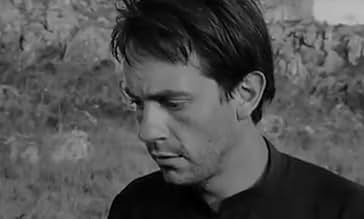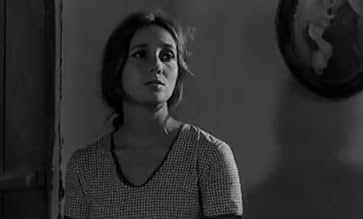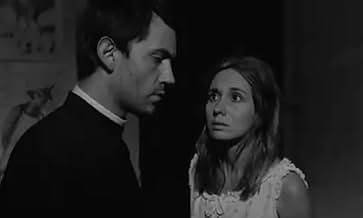Ajouter une intrigue dans votre langueIn a small town in Minas Gerais, the arrival of a young priest causes a commotion in the conservative atmosphere of the place, aggravated by the sudden attraction this priest feels for a bea... Tout lireIn a small town in Minas Gerais, the arrival of a young priest causes a commotion in the conservative atmosphere of the place, aggravated by the sudden attraction this priest feels for a beautiful girl. This forbidden love affair soon turns into an unbridled passion.In a small town in Minas Gerais, the arrival of a young priest causes a commotion in the conservative atmosphere of the place, aggravated by the sudden attraction this priest feels for a beautiful girl. This forbidden love affair soon turns into an unbridled passion.
- Réalisation
- Scénario
- Casting principal
- Récompenses
- 2 victoires et 1 nomination au total
Avis à la une
Although the film could just have been about the temptation of a priest, it's actually much more than that. A young priest arrives in town and hears a confession of the dying priest. The one word we catch is "Mariana."
What follows is a complex interaction, because two local men desire Mariana. It becomes clear that the priest is the third man in that category.
Helena Ignez portrays Mariana. It's obvious that director Andrade is aware of Ignez's charms. We get many, many closeups of her face. (In fairness, we get quite a few closeups of Paulo José, who portrays Padre Antonio.)
The film is set in the Brazilian state of Minas Gerais. A Brazilian friend told me that this is not a traditionally poor, dry area. However, there are pockets of poverty, and the movie is set in one of them.
The entire movie takes place in a dry, rocky, setting. It's made even more stark by the black and white photography.
The Priest and the Girl isn't an easy movie to watch. I don't think anyone in the film ever smiled. The good news is that it has a positive IMDb rating of 7.3. I agreed, and rated it 7.
The film suffers from pace problems: the first half is great, the second half drags on purposelessly. The characters are sketched to remain mysterious (it's all suggestions, nothing is defined), but you could also call them underdeveloped. Carlos Lyra's music is either in the wrong places or missing in scenes that begged for a score. The chiaroscuro cinematography by Mário Carneiro has extraordinary moments, but sometimes the film simply "stops" for the sake of beautiful framings and compositions. The film benefits immensely from all-location shooting in the tiny village of São Gonçalo do Rio das Pedras, with its ruined vestiges of 18th century grandeur (it used to be a diamond exploitation site), Brazilian colonial architecture and rococo churches. There's also an effective use of the local population in bit parts, adding to the film's sense of realism.
Above all, it's a chance to see the striking debut of actor Paulo José, who was summoned two days prior to shooting as a replacement for another actor who fell ill. A stage actor, Paulo had no previous film experience, but -- bingo! -- with "O Padre e a Moça" one of the best ever Brazilian film actors was born, and in the following year he would become a full-fledged star with Domingo de Oliveira's hit "Todas as Mulheres do Mundo". There isn't one single false note in his portrayal of the repressed, anguished priest, and he has one of the those faces you don't get tired of watching. Helena Ignez was never lovelier and is thoroughly believable as the beautiful, stifling, abused girl who entices men's desire and women's envy. Mario Lago is perfect as the village's big-boss who abuses everyone and plays father-lover to the girl. Fauzi Arap lends nervousness to the confusing part of the drunkard who claims to have an affair with the girl (though there's a strong suggestion he's impotent).
Recommended for Cinema Novo fans and viewers who don't have problems with slow-paced and Catholic-guilt films, "O Padre e a Moça" is the flawed but honorable fiction debut of an important filmmaker whose next film would take Brazilian cinema by storm: the iconoclast, trend-setting, revolutionary masterpiece "Macunaíma", the biggest hit of the Cinema Novo movement.
Title (Brazil): `O Padre e a Moça' (`The Priest and the Young Woman')
Le saviez-vous
- AnecdotesThe film was saved from deterioration by the "vinegar syndrome" and fully restored in 2002.
- ConnexionsEdited into Helena Zero (2006)
Meilleurs choix
- How long is The Priest and the Girl?Alimenté par Alexa
Détails
- Durée1 heure 30 minutes
- Couleur
- Mixage
- Rapport de forme
- 1.66 : 1
Contribuer à cette page






















